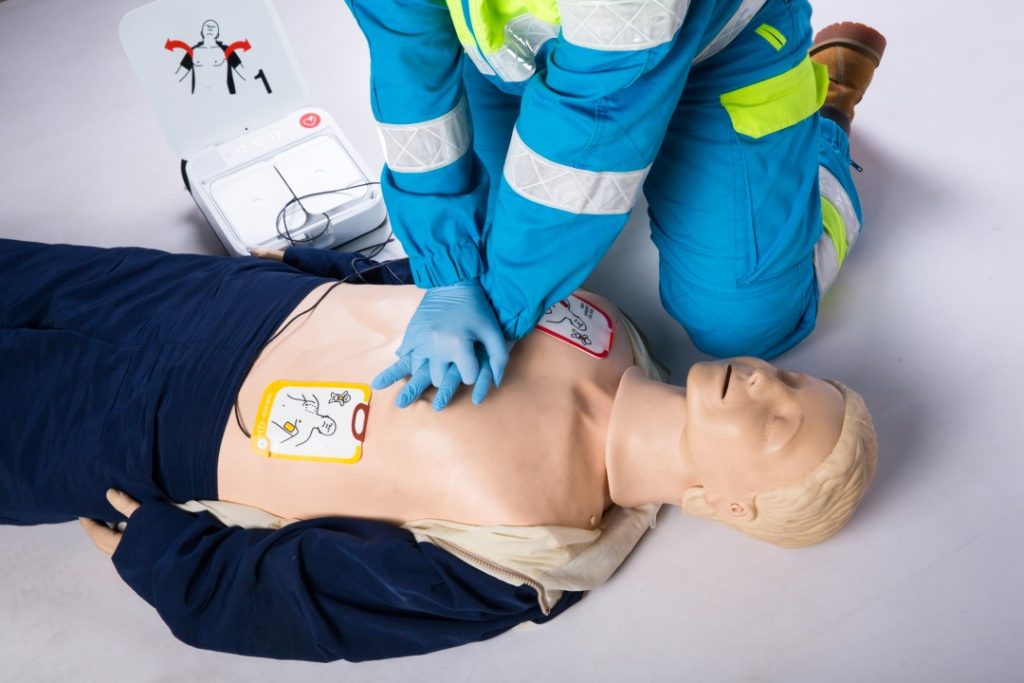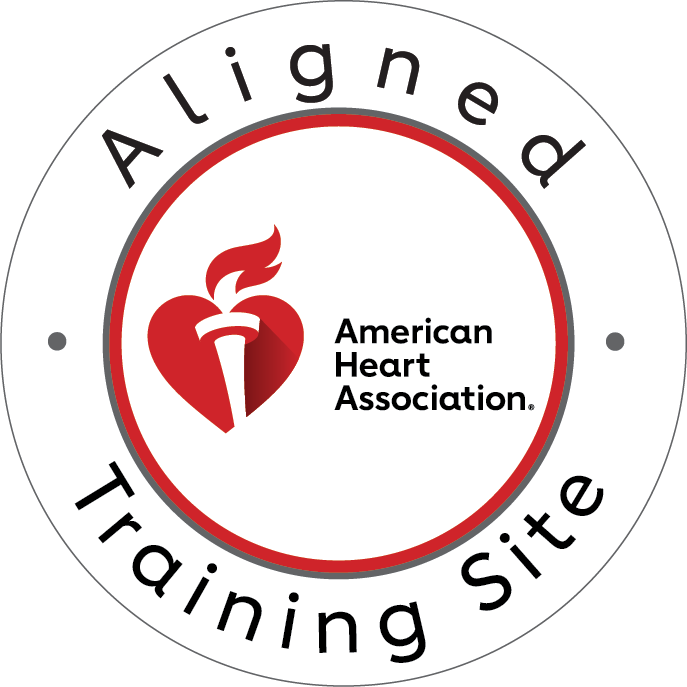In the critical moments following cardiac arrest, every second and every action matter. When performing cardiopulmonary resuscitation (CPR), maintaining the proper ventilation rate of 10-12 breaths per minute can mean the difference between life and death. This optimal breathing rate ensures that victims receive adequate oxygen without compromising chest compressions – the cornerstone of effective resuscitation.
For anyone who might find themselves in an emergency situation, understanding the science behind these lifesaving protocols is essential. Whether you’re a healthcare professional or a concerned citizen, knowing why proper ventilation rates matter could help you save someone’s life someday.
The Science Behind Proper Ventilation During CPR
When cardiac arrest occurs, the heart stops pumping blood effectively throughout the body. Without intervention, oxygen-rich blood fails to reach vital organs, particularly the brain, which begins to suffer damage after just 4-6 minutes without oxygen. This is where proper CPR techniques, including the correct ventilation rate, become critical.
Why 10-12 Breaths Per Minute is the Sweet Spot
During adult CPR, providing 10-12 breaths per minute (or one breath every 5-6 seconds after securing an airway) strikes the perfect balance between:
- Adequate Oxygenation: This rate ensures sufficient oxygen enters the bloodstream to support essential organ function.
- Avoiding Hyperventilation: Providing too many breaths can increase intrathoracic pressure, which reduces venous return to the heart and decreases cardiac output.
- Minimizing Compression Interruptions: Each pause for ventilation means a temporary halt to blood circulation, so keeping breathing interventions efficient maximizes the time spent on life-sustaining compressions.
Research consistently shows that hyperventilation during CPR is common but detrimental. When rescuers exceed the recommended 10-12 breaths per minute, they inadvertently reduce survival rates by compromising hemodynamics – the flow of blood throughout the cardiovascular system.
The Critical 10-Second Assessment: Why Time is Brain
Why is the Maximum Time Frame to Check for Normal Breathing in a Victim Only 10 Seconds?
Before beginning CPR, rescuers must quickly determine if the person is responsive and breathing normally. The American Heart Association (AHA) stipulates that this assessment should take no longer than 10 seconds. This brief timeframe exists for several compelling reasons:
- Preventing Oxygen Deprivation: The brain begins to suffer irreversible damage after just 4-6 minutes without oxygen. Every additional second spent checking for breathing is a second lost in beginning life-sustaining compressions.
- Recognizing Agonal Respirations: During cardiac arrest, victims may exhibit agonal respirations – irregular, gasping breaths that can be mistaken for normal breathing. These are actually signs of brain stem activity during cardiac arrest and should not delay CPR. A quick 10-second check helps prevent this misinterpretation.
- Maximizing Survival Chances: Studies show that for every minute CPR is delayed, survival rates decrease by 7-10%. The 10-second limit ensures prompt intervention.
- Practical Decision-Making: In high-stress emergency situations, having a clear, brief timeframe helps rescuers make decisive actions rather than spending precious time in prolonged assessment.
When performing this critical check, rescuers should simultaneously look for chest movement, listen for breath sounds, and feel for exhaled air against their cheek. This “look, listen, and feel” approach within the 10-second window provides sufficient information to determine if CPR should begin.
The Foundation of Effective CPR: Understanding the Adult Ratio
What is the Ratio for CPR for Adults?
For adult victims, the AHA recommends a 30:2 compression-to-ventilation ratio when performed by a single rescuer. This means delivering 30 chest compressions followed by 2 rescue breaths. This carefully calculated ratio ensures optimal blood circulation while maintaining adequate oxygenation.
The 30:2 ratio strikes a critical balance:
- Prioritizing Compressions: The emphasis on compressions (30 before each set of breaths) recognizes that maintaining blood circulation is the primary goal of CPR.
- Ensuring Oxygenation: The two rescue breaths provide essential oxygen to the bloodstream.
- Minimizing Interruptions: By grouping compressions and limiting ventilation pauses, this ratio maximizes blood flow to vital organs.
When rescuers secure an advanced airway (like an endotracheal tube), the protocol shifts: continuous compressions at a rate of 100-120 per minute with asynchronous ventilations at 10-12 breaths per minute. This allows for uninterrupted chest compressions while still maintaining proper ventilation.
The Perfect Breath: Mastering Ventilation Techniques
Delivering effective rescue breaths during CPR requires precise technique and attention to detail. The quality of each breath, not just the rate, significantly impacts resuscitation outcomes. When performing ventilations during CPR, rescuers should focus on these critical elements:
Key Components of Effective Rescue Breaths
Each rescue breath should:
- Last approximately 1 second (not longer)
- Provide just enough volume to make the chest visibly rise (approximately 500-600 mL for adults)
- Avoid excessive force that could cause stomach inflation or barotrauma
- Allow for complete passive exhalation between breaths
- Be delivered with minimal interruption to chest compressions
Proper Airway Positioning
Before attempting ventilation, establishing a patent airway is essential:
- Head Tilt-Chin Lift Maneuver: For victims without suspected spine injury, tilt the head back by placing one hand on the forehead and using the fingertips of the other hand to lift the chin. This opens the airway by pulling the tongue away from the back of the throat.
- Jaw Thrust: For victims with suspected spine injuries, use the jaw thrust technique by placing your fingers behind the angles of the jaw and pushing forward. This opens the airway while maintaining neutral alignment of the cervical spine.
Ventilation Delivery Methods
Various methods can be used to deliver the critical 10-12 breaths per minute:
Mouth-to-Mouth Ventilation:
- Create a tight seal by pinching the victim’s nose
- Place your mouth completely over the victim’s mouth
- Deliver each breath steadily and evenly
- Watch for visible chest rise
Pocket Mask Ventilation:
- Position the mask to create an airtight seal over the mouth and nose
- Tilt the head and lift the chin simultaneously
- Deliver breaths through the one-way valve
- Observe for chest rise with each ventilation
Bag-Mask Ventilation:
- Select the appropriate mask size
- Create a “C-E” grip (thumb and index finger form a “C” on the mask, other fingers form an “E” on the jaw)
- Squeeze the bag with your other hand at a controlled rate
- Deliver each breath over 1 second with visible chest rise
Common Ventilation Errors and Solutions
- Hyperventilation: Providing breaths too rapidly or with excessive volume can:
- Increase intrathoracic pressure
- Decrease venous return
- Reduce coronary perfusion
- Causes gastric distention
Solution: Focus on the 10-12 breaths per minute rhythm and watch for gentle chest rise.
Inadequate Seal: Air leakage around the mouth or nose decreases effective ventilation.
Solution: Reposition your hands and mouth or mask to create a proper seal.
Inadequate Head Tilt-Chin Lift: Improper airway positioning can obstruct air flow.
Solution: Ensure proper head positioning before each ventilation attempt.
Excessive Ventilation Volume: Forcing too much air can cause gastric inflation.
Solution: Deliver gentle breaths focused on just achieving visible chest rise.
The Two-Person Bag-Mask Technique
When available, a two-person approach to bag-mask ventilation significantly improves effectiveness:
- First rescuer maintains the mask seal with both hands
- The second rescuer squeezes the bag to deliver ventilation
- This technique improves the mask seal and allows for better control of ventilation volume
- Teamwork ensures the critical 10-12 breaths per minute are delivered optimally
Mastering these ventilation techniques ensures that each of the 10-12 breaths per minute delivers optimal oxygen to the victim’s bloodstream, maximizing the chances of successful resuscitation.
Advanced Considerations: Special Circumstances and Challenges
While the standard adult CPR protocol calls for a 30:2 compression-to-ventilation ratio and 10-12 breaths per minute when an advanced airway is in place, certain situations require modifications to these fundamental principles. Understanding these special circumstances ensures rescuers can adapt their approach while maintaining effective ventilation.
Drowning Victims
For drowning victims, the primary issue is hypoxia (oxygen deprivation) rather than a primary cardiac problem. The AHA recommends:
- Starting with 5 initial rescue breaths before beginning standard CPR
- Paying extra attention to establishing an effective airway, as water-related aspiration may create additional challenges
- Continuing with the standard 30:2 compression-to-ventilation ratio after the initial 5 breaths
- Being prepared for complications such as vomiting during resuscitation attempts
Research shows that this modified approach addresses the primary problem of oxygen deprivation due to water in the lungs and improves outcomes in drowning cases.
Pregnancy
Cardiac arrest in pregnant women presents unique physiological challenges due to:
- Aortocaval compression by the gravid uterus
- Increased oxygen consumption
- Reduced functional residual capacity
- Elevated risk of aspiration
For late-pregnancy cardiac arrest victims, rescuers should:
- Perform chest compressions slightly higher on the sternum
- Manually displace the uterus to the left to reduce aortic compression
- Maintain the standard 10-12 breaths per minute ventilation rate
- Consider early advanced airway management if possible
- Prepare for potential perimortem cesarean delivery if initial resuscitation efforts are unsuccessful
These modifications ensure adequate cardiac output and ventilation while addressing the unique anatomical and physiological changes of pregnancy.
Suspected Opioid Overdose
With the rising opioid crisis, rescuers may encounter victims of overdose. These cases typically present as respiratory depression before cardiac arrest. Proper management includes:
- The immediate administration of naloxone (if available)
- Focusing on effective ventilation, as respiratory depression is the primary issue
- Maintaining the 10-12 breaths per minute rate to reverse hypoxia
- Being prepared for the possible sudden return of consciousness after naloxone administration
- Continuing monitoring even after apparent recovery, as opioid effects may outlast naloxone
Environmental Challenges
Environmental factors can complicate ventilation during CPR:
Extreme Temperatures:
- In cold environments, rescuers may need to remove wet clothing and provide insulation while maintaining proper ventilation rates
- In hot environments, moving the victim to shade when possible can prevent rescuer fatigue and maintain effective ventilation
Limited Space:
- In confined spaces, rescuers may need to modify positioning while still maintaining proper head tilt-chin lift and ensuring the 10-12 breaths per minute rate
Public Settings:
- Bystander presence may create distractions
- Designating a specific person to count ventilation rates can help maintain the critical 10-12 breaths per minute
Ventilation During CPR with Personal Protective Equipment
During pandemic situations or when an infectious disease is suspected, rescuers face additional challenges:
- Use of personal protective equipment (PPE) can make creating an effective seal more difficult
- Barrier devices become essential for providing safe ventilation
- Training specifically with masks and other PPE improves performance
- The goal remains delivering effective ventilation at 10-12 breaths per minute
Understanding these advanced considerations ensures that even in complex situations, rescuers can adapt their approach while maintaining the core principle of effective ventilation at 10-12 breaths per minute.
The Critical Role of Bystander CPR
Bystander CPR dramatically improves survival rates, yet many hesitate to act due to fear of performing ventilations incorrectly. For this reason, the AHA supports Hands-Only CPR (compression-only) for untrained rescuers, emphasizing that some action is better than none.
However, for trained rescuers, the complete CPR protocol, including the 10-12 breaths per minute ventilation rate, provides better outcomes, especially for:
- Pediatric victims
- Drowning victims
- Asphyxial cardiac arrest
- Prolonged resuscitation scenarios
Staying Current: The Importance of CPR Certification
CPR guidelines evolve based on the latest scientific evidence. The current emphasis on:
- High-quality compressions
- Minimal interruptions
- 10-12 breaths per minute ventilation rate
- 30:2 compression-to-ventilation ratio
All reflect ongoing research into optimizing survival outcomes. Regular recertification ensures rescuers remain current with best practices.
The Future of Resuscitation Science
Research continues to refine our understanding of optimal CPR techniques. Emerging areas of study include:
- Personalized CPR Parameters: Adjusting compression depth and ventilation rates based on victim characteristics
- Real-Time Feedback Devices: Technology that guides rescuers to maintain proper rates and depths
- Mechanical Ventilation Adjuncts: Devices that deliver precisely timed and measured breaths
Despite technological advances, the fundamental principles of proper ventilation rates (those critical 10-12 breaths per minute) remain foundational to successful resuscitation outcomes.
Take Action: Be Prepared to Save a Life
Cardiac emergencies can happen anywhere, anytime, to anyone. Being prepared means:
- Getting certified: Formal training provides hands-on practice and confidence
- Regular refreshers: Skills deteriorate over time without practice
- Staying informed: Guidelines evolve based on new research
When a cardiac emergency strikes, knowing the proper techniques—including maintaining 10-12 breaths per minute and following the 30:2 compression-to-ventilation ratio—can make you the critical link in the chain of survival.
Conclusion: Why Every Detail Matters
In the high-stakes scenario of cardiac arrest, seemingly small details like maintaining 10-12 breaths per minute during adult CPR make tremendous differences in outcomes. This optimal ventilation rate:
- Ensures adequate oxygenation
- Prevents harmful hyperventilation
- Maximizes time spent on critical chest compressions
- Balances the competing needs of circulation and oxygenation
By understanding and implementing these evidence-based protocols, rescuers provide victims with the best possible chance of neurologically intact survival.
Get Certified Today: Be the Difference in an Emergency
Don’t wait for a crisis to wish you had the skills to act. When cardiac emergencies strike, they happen without warning, and the difference between life and death often depends on having a trained responder present who understands critical concepts like the 10-12 breaths per minute ventilation rate.
Why Choose CPR Nashville for Your Certification Needs
CPR Nashville stands out as a premier American Heart Association training site that offers:
- Comprehensive Training Programs: From basic CPR to advanced life support protocols
- Stress-Free Learning Environment: Supportive instructors who ensure you master every technique
- Hands-On Practice: Real-world scenarios that build confidence and competence
- Flexible Scheduling: Options that work around your busy life
- Up-to-Date Protocols: Training that reflects the latest AHA guidelines, including proper ventilation rates
Our certified instructors are passionate about creating capable rescuers who understand not just what to do, but why techniques like maintaining 10-12 breaths per minute during adult CPR are so critical to positive outcomes.
Available Certification Programs
Whether you’re a healthcare professional or a concerned community member, CPR Nashville offers the right program for you:
- BLS for Healthcare Providers: Comprehensive training for medical professionals
- ACLS (Advanced Cardiac Life Support): Advanced techniques for healthcare providers
- PALS (Pediatric Advanced Life Support): Specialized training for pediatric emergencies
- CPR and First Aid: Essential skills for everyone
All courses emphasize proper technique, including the critical 30:2 compression-to-ventilation ratio and the optimal 10-12 breaths per minute ventilation rate when an advanced airway is present.
Take Action Now
Invest in skills that could save a life—perhaps someone you love. The ability to perform proper CPR with effective ventilations at 10-12 breaths per minute isn’t just a certification; it’s a gift you give to your community and loved ones.
Contact CPR Nashville today for CPR certification Nashville or BLS certification Nashville, and join the ranks of prepared rescuers who make a difference when every second counts. Be the one who knows what to do when it matters most.
Remember: At CPR Nashville, we don’t just teach protocols—we create confident rescuers who understand the science behind the 10-12 breaths per minute that can save a life.





